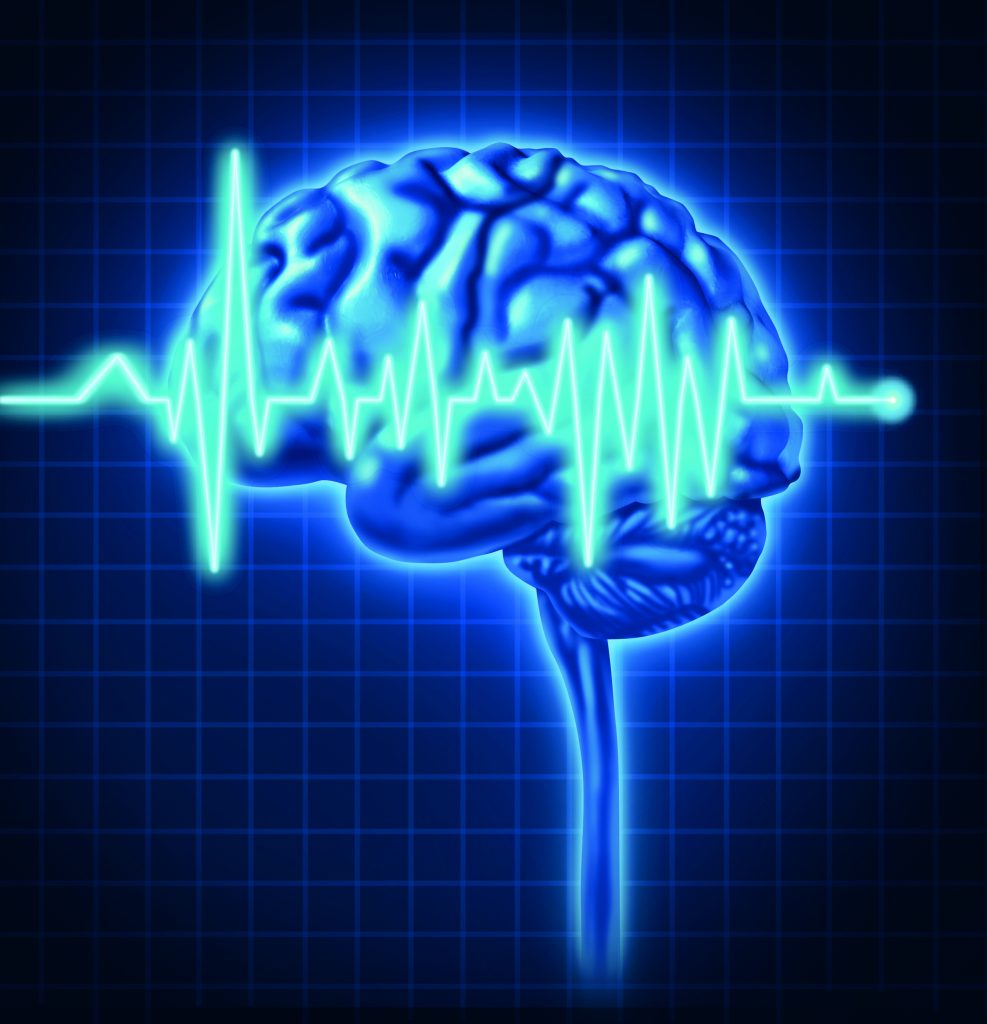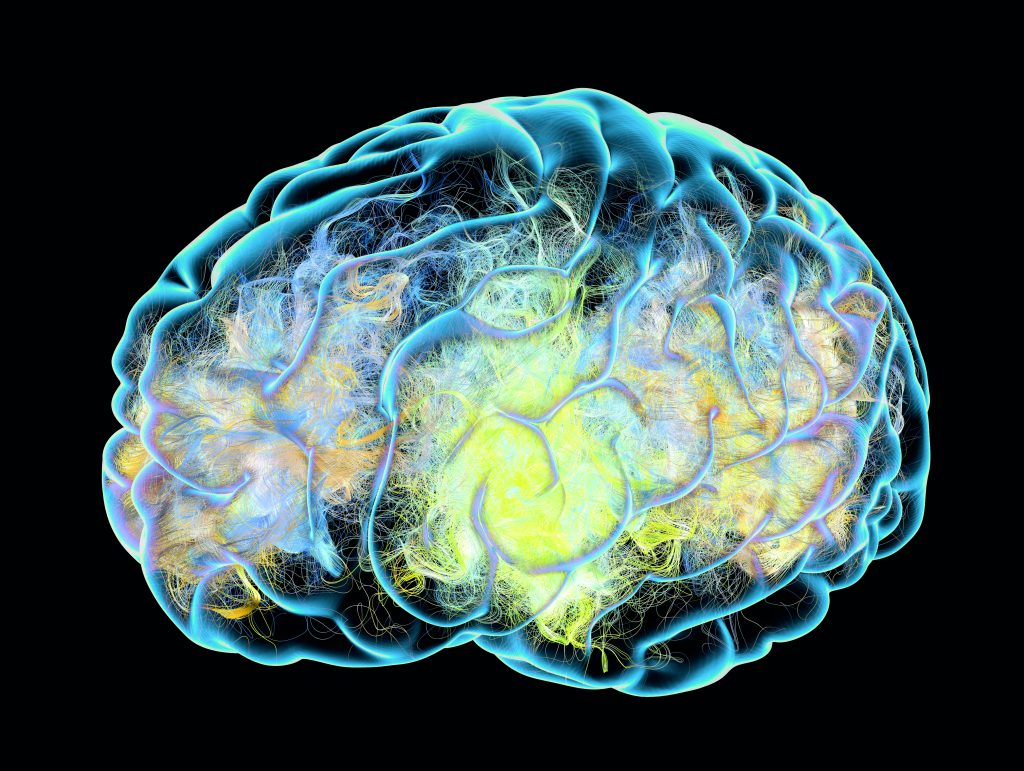Dr Israel Liberzon – Unravelling the Neural Networks Underpinning Posttraumatic Stress Disorder
Posttraumatic stress disorder (PTSD) is a prevalent psychiatric condition, significantly impacting the lives of millions of people globally. Sadly, symptoms often persist despite treatment. A better understanding of the brain abnormalities involved in PTSD is crucial to improving therapy development. Dr Israel Liberzon and his colleagues at the Texas A&M Health Sciences Centre have been working to uncover the dysfunctional neural networks that contribute to PTSD symptoms to inform the development of more effective interventions.
The Impact of Trauma
Being involved in or witness to a traumatic event at some stage in our lives is more than likely. Traumatic experiences – from military combat to road traffic accidents to violent assaults to natural disasters – are commonplace across the world and often result in debilitating consequences. One such consequence for individuals can be the development of posttraumatic stress disorder (PTSD).
Although clinical diagnostic criteria have changed over the decades (and will no doubt continue to evolve), PTSD is diagnosed according to core clusters of symptoms: intrusive and avoidant symptoms, negative cognitions, and hyperarousal. Despite the intensive research into PTSD to date, an understanding of the fundamental neurobiological abnormalities that are associated with PTSD and its symptoms has remained elusive. Without this understanding, current clinical treatments and interventions are often untimely and lacking in specificity. Improved knowledge of the underlying mechanisms of PTSD, however, would allow a move towards personalised treatment plans and even the prevention of PTSD.
Researching Posttraumatic Stress Disorder
Until recently, the understanding of the underlying mechanisms in PTSD was limited to the effects of the condition on physiological markers that could be readily measured, such as heart rate changes and the concentrations of stress hormones in blood and saliva. Genetic studies have identified genes that appear to be linked to PTSD, but these observations require confirmation as so far, they appear to be more preliminary and non-specific. Improvements in neuroimaging methods have enabled recent research efforts to focus on the effects of PTSD within specific neural circuits, which are the electro-chemical communication networks within the brain. Furthermore, how abnormalities in these circuits can influence the presentation of symptoms can be studied.
Powerful PTSD models have been developed from such research, including the abnormal fear learning model, exaggerated threat detection model and the diminished emotional regulation/executive function model, which are each linked to specific neural circuits and correspond to underlying molecular and cellular mechanisms. However, these experimental models leave several aspects of PTSD unexplained, including complex symptoms and substantiated neurobiological findings.

The Altered Contextualisation Hypothesis
Dr Israel Liberzon and his colleagues have identified the need for a PTSD model that would encompass and explain multiple aspects and presentations of the disorder. ‘Ultimate cure or recovery is possible only if the underlying mechanism of the disease is fully uncovered,’ notes Dr Liberzon. The team proposed a new altered contextual processing (CP) model, focussing on the deficits in the neural circuits that are responsible for processing contextual information and regulating emotional responses. This comprehensive CP model will provide a more precise neurobiological understanding, ultimately contributing to improved success in translating research into clinical interventions.
Contextual processing involves perception and cognitive interpretation of general, emotional and other signals in a situation, to determine its overall meaning, for example ‘safe’ or ‘dangerous’ environment. Various signals from a given situation or environment are assembled and stored as contextual representations, which can be later utilised to produce an appropriate response according to the needs of a future situation. A lack of precision and flexibility in these representations, necessary for correctly inferred circumstances and appropriate behavioural responses, is likely responsible for a broad range of symptoms in PTSD.

Investigating the Neural Networks Involved
There is much research to suggest that dysfunction in the context processing circuitry plays a central role in the mechanisms underlying PTSD, and several specific brain regions have been identified as potential contributors.
The hippocampus, responsible for establishing new memories, appears to contribute to increased vigilance and arousal in PTSD sufferers by excessively recalling traumatic experiences even in incorrect contexts. The prefrontal cortex, interconnected with the hippocampus, seems to accumulate the features of similar contexts to connect different experiences over time. Dysfunction in this hippocampal-pre-frontal-thalamic network could induce misinterpretation and fear learning of innocuous cues as traumatic signals, causing disproportionate fear behaviours and emotional overreaction in PTSD. Dr Liberzon and his colleagues investigated the possible role of this hippocampal-pre-frontal-thalamic network in relation to their CP model; they found a diminished ability to learn appropriate fear/safety behaviours and reactions, alongside reduced activity in these brain regions of individuals with PTSD. The team proposed that such a dysfunctional network could lead to the inappropriate linking of erroneous emotions to different contexts.
In his published work, Dr Liberzon speculates ‘if a context is identified as “unsafe,” attention is focussed on potential threat cues, leading to hypervigilance; but if contextual information that should alert one to danger is missed, this might lead to recklessness and re-traumatisation,’ linking the neurobiological abnormalities to previously unexplained aspects of PTSD. In this way, the CP model provides a robust framework for integrating underlying mechanisms with multitude of clinical presentations in PTSD. Genetic and animal model studies have corroborated Dr Liberzon’s findings and hypotheses, with new research consistently implicating the hippocampal-pre-frontal-thalamic circuitry in the genetic and developmental defects linked to PTSD.
Results emerging from electrophysiological studies, where the electrical inputs and signals between cells and anatomical structures are measured, have indicated that disrupted hippocampal-pre-frontal-thalamic network communication contributes to abnormalities in the stress hormone systems through sleep disturbance, leading to interrupted memory formation and consolidation in PTSD. Dr Liberzon’s CP model of PTSD is therefore proving to be a general, parsimoneous explanation for the genetic, hormonal, and psychophysiological mechanisms of the disorder.
‘We cannot wait for the ultimate solution, and best available care must be developed and administered.’

Tackling the Spectrum of Symptoms in Treatment
Using the concept of intermediate phenotypes (IPs) – clinical presentations that are linked to an underlying dysfunctional neurological mechanism – Dr Liberzon suggests that disorders like PTSD should be considered more like syndromes, that combine specific neurobiological IPs that produce a unique version of the condition in affected individuals. He states that ‘identifying distinct IPs will facilitate the development of more valid animal models needed to further dissect the mechanistic neurobiology of all “types” of PTSD,’ while emphasising that ‘further elucidation of the cellular and/or molecular mechanisms is critical.’
Working on the basis of previous research, Dr Liberzon and his colleagues have most recently conducted a study assessing volume abnormalities in different brain regions implicated in PTSD. Coming together with scientists and clinicians across the globe, Dr Liberzon and the team have been able to perform one of the most comprehensive analyses to date, assessing the effects of PTSD in the brain regions of nearly 1400 affected individuals. They found PTSD to be associated with smaller volumes in brain regions involved in emotion, sensory information and memory processing, with greater volume reduction in these areas corresponding to increasing severity of the PTSD symptoms.
‘Our findings support current thinking on deficits in emotion neuro-circuits in PTSD and shed new light on the involvement of sensory brain circuits’ notes Dr Liberzon. Such findings will be crucial in identifying individualised presentations of the disorder, or dominant symptoms and dysfunctional mechanisms in a given patient, leading towards the potential for a more specifically targeted treatment and a more personalised medicine approach.
As both a physician and a scientist, Dr Liberzon is dedicated to easing the suffering of individuals with mental health difficulties, particularly those with PTSD. ‘We cannot wait for the ultimate solution, and best available care must be developed and administered,’ he explains.

Future Paths for Research
Now a Professor and Department Head of Psychiatry at the Texas A & M Health Sciences Centre in the USA, Dr Liberzon plans to continue his research with ‘rigour and intensity’, having identified the hippocampal-pre-frontal-thalamic circuitry as a key neural circuit affected in PTSD patients.
Dr Liberzon already has substantial backing to explore this promising avenue of research, and intends to continue working towards better treatment strategies and intervention approaches in PTSD, in combination with personalised medicine approaches. ‘This was a challenging but immensely gratifying path,’ notes Dr Liberzon. He indicates that future research will also investigate links with PTSD to other diseases, such as heart disease and the involvement of inflammation, to improve the understanding of the impact of co-existing diseases on the severity and presentation of PTSD, since the effects of these disorders add further to the detriment of the overall health of an individual.
Dr Liberzon hopes that continuing a career in translational science, engaging in research and clinical practice simultaneously, will prove effective in easing the suffering associated with PTSD more efficiently.
Reference
https://doi.org/10.33548/SCIENTIA665
Meet the researcher

Dr Israel Liberzon
Department of Psychiatry
Texas A&M Health Sciences Center
Bryan, TX
USA
Dr Israel Liberzon received his MD in Israel at Tel Aviv University after studying Biology. His postdoctoral training began in Israel, before moving to the University of Michigan in the USA, where he was appointed Professor of Psychiatry and Psychology. Dr Liberzon’s defining interests stem from his career as a physician-scientist, devoting his work to easing the suffering of individuals with PTSD by researching the risk and resilience factors important in the disorder. Having developed the most widely used animal model of PTSD, he continues to develop new hypotheses on the underlying dysfunctional mechanisms to improve treatment strategies. As an expert in his field and co-leader of the development of an international PTSD group, Dr Liberzon has been invited to lecture around the world, training the next generation of successful researchers. Now, as Professor of Psychiatry at the Texas A&M Health Sciences Center, Dr Liberzon intends to continue studying the neurobiology of individual presentations of PTSD taking into account the impact of other health conditions on the severity of the disorder.
CONTACT
W: https://health.tamu.edu/experts/israel-liberzon.html
FUNDING
Department of Defense
National Institute of Mental Health
National Center for Complementary and Integrative Health
FURTHER READING
S A Perrine, I Liberzon, Editorial: Pre-clinical Models of PTSD, Frontiers in Behavioural Neuroscience, 2019, 13, 237.
I Liberzon, Searching for Intermediate Phenotypes in Posttraumatic Stress Disorder, Biological Psychiatry, 2018, 83, 10, 797–799.
I Liberzon, J L Abelson, Context Processing and the Neurobiology of Post-Traumatic Stress Disorder, Neuron, 2016, 92. 14–30.

Want to republish our articles?
We encourage all formats of sharing and republishing of our articles. Whether you want to host on your website, publication or blog, we welcome this. Find out more
Creative Commons Licence
(CC BY 4.0)
This work is licensed under a Creative Commons Attribution 4.0 International License. 
What does this mean?
Share: You can copy and redistribute the material in any medium or format
Adapt: You can change, and build upon the material for any purpose, even commercially.
Credit: You must give appropriate credit, provide a link to the license, and indicate if changes were made.
More articles you may like
Grandmothers: Innovation Through Tradition
Grandmother Project – Change through Culture (GMP) is an organisation dedicated to documenting the role of grandmothers and demonstrating the effectiveness of grandmother-inclusive strategies in improving the health and well-being of women, children, and adolescents. GMP’s groundbreaking work challenges conventional wisdom to transform community-based interventions in Africa and beyond, harnessing a powerful but often overlooked resource: the wisdom and influence of grandmothers.
Dr Robert Larkin | Cultivating Change to Improve Soil Health and Increase Potato Yield
Environmental quality and food production are facing the pressing challenges of climate change and global population growth. Dr Robert Larkin from the United States Department of Agriculture-Agricultural Research Service (USDA-ARS) and a team of plant scientists developed and tested a range of crop management systems to help overcome these compounding challenges. Their work is improving soil health and increasing the yield of potato crops, contributing to the future food security of nations.
Professor Giorgio Buttazzo | Artificial Intelligence and a Crossroads for Humanity
Where do we stand with artificial intelligence? Might machines take over our jobs? Can machines become conscious? Might we be harmed by robots? What is the future of humanity? Professor Giorgio Buttazzo of Scuola Superiore Sant’Anna is an expert in artificial intelligence and neural networks. In a recent publication, he provides considered insights into some of the most pressing questions surrounding artificial intelligence and humanity.
Dr Ralf Adam | New Technologies Shaping the Future of Oral Hygiene
Understanding the efficiency of various toothbrush technologies is essential for achieving optimal oral health. Dr Ralf Adam, who leads a dedicated team at Procter & Gamble in Germany, is keen to investigate the complexities of these technologies. His team have provided new insights into the best toothbrush types for plaque removal and the maintenance of gum health. By highlighting the importance of informed oral care decisions and ongoing investigations, this vital research works towards ensuring everyone can achieve a brighter, healthier smile.




